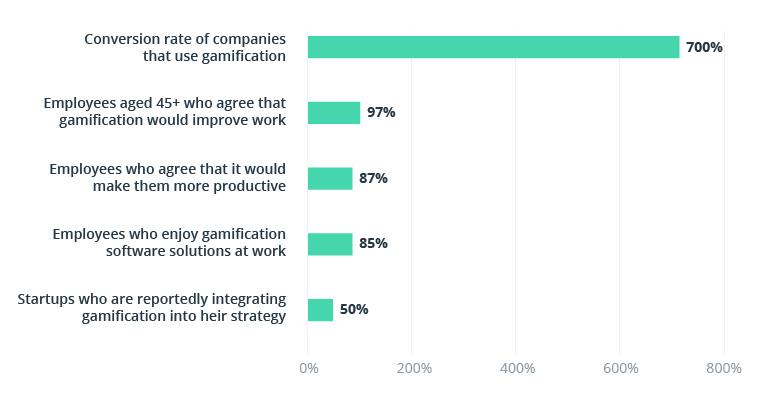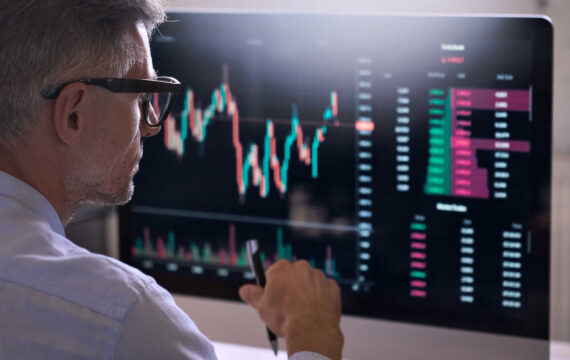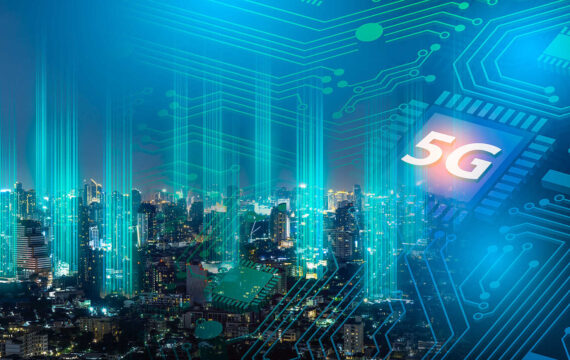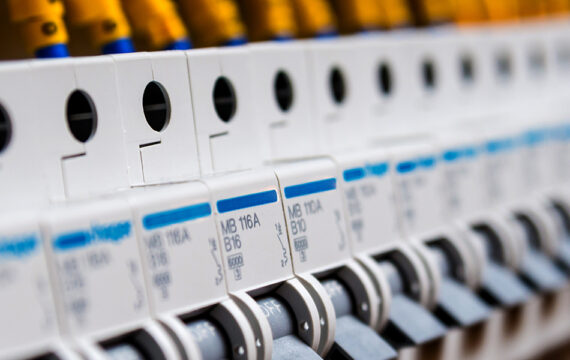Everyone has played some sort of game at least once. Racing games, mobile games, shooters — games come in all shapes and sizes these days. But what about games in the business environment: Is there a place for competition and reward? Yes, there is. Business is all about competition, rewards, and incentives. Gamification, or game-like tools applied to non-gaming systems, has much to offer in terms of helping businesses meet their goals. Today, we’ll have a closer look at gamification principles applied by utilities because of pressing issues, including excessive energy consumption.
Energy gamification for utilities means an entertainment-driven approach to solving serious environmental problems. And the problems are serious indeed. The human appetite for natural resources, including those used to produce electricity, is enormous. The sad thing is that these resources are limited and our consumption is not sustainable. Badges, labels, and points to save the planet? It’s not serious, you might say. We’ll persuade you that it’s all possible.
First things first: What is gamification?
Let’s compare two scenarios. Imagine you live in a neighborhood that has friendly relations with the energy service provider. Your service provider needs to reduce energy consumption in your region and informs you of that. You agree that saving energy is a good idea and figure you might give it a try someday. Meanwhile, you keep on diligently paying your bills. Under another scenario, you’re informed that there’s an energy-saving competition in your neighborhood. In three months, the utility provider will choose the top three customers who have managed to reduce their energy consumption the most. On top of that, if you’re actively promoting the initiative on social media, you’ll get a discount on your bills for the next three months. Do you feel the difference? The second scenario uses gamification.
The value for the global gamification market in 2018 comprised $ 6.8 billion. It’s projected to grow at a CAGR of 32% to $40 billion by 2024.
The main goal of gamification is to improve user engagement and motivation. Typical gamification elements are points, timers, badges, and leaderboards. All of these are incorporated into people’s activities. Gamified applications appeal to people’s competitiveness, desire to learn, and need to socialize.
Employees’ feedback on gamification in operations

FinancesOnline Review for Business – 47 Gamification Statistics You Must Know: 2020 Market Share Analysis & Data
Energy gamification for utilities: Is saving energy as easy as playing a game?
At the governmental level, stakeholders are straightforward about the situation with energy consumption. On a global scale, governments either call for a reduction in the use of electricity or an increase in utility costs. Gamification can benefit utility providers while preventing a backlash from consumers. So yes, saving energy can be as easy as playing games. Here’s why.
A typical example of a gamified electricity-saving app
System architecture of a utility gamification solution

ScienceDirect – Gamification-based framework for engagement of residential customers in energy applications
Here are some gamification techniques for the utility industry. A typical game-like solution for utilities must get the whole household involved in the competition. The utility gamification can be played against another household or between members of the same household. Either way, the goal is to save energy. Users can get points for completing particular tasks — for instance, turning off devices instead of leaving them on standby. Or running the washing machine and dishwasher only when they’re full and using energy-efficient modes. The more energy-efficient actions, the more points.
Now it’s time to compare the results. Smart meters help users compare daily, weekly, or monthly electricity consumption data against historical records and team members’ performance. In this way, a smart meter is a fundamental element of the gamification concept. Household members can interact via social media in return for more points or badges. And, of course, there are rewards: a discount on an electricity bill, gifts for the household, or even support for a charity initiative.
Such a gamification scenario works well for addressing problems like a strain on the power grid. In summer, when air conditioners operate at full capacity, electricity demand can exert a grid’s capacity. The same happens in winter, when heating systems increase electricity or gas consumption. Below is a practical case showing how gamification helps manage energy demand during peak hours.
How utility gamification helped lower energy consumption peaks in three EU countries
A 15% reduction in energy costs and 30% lower carbon dioxide emissions were the stunning results of gamification for utility customers piloted in Helsinki, Nice, and Vienna. The gamification-based solutions for utilities consisted of an energy planning tool for utility operators and an application for consumers. The successful campaign managed to attract 80% of households in those three cities.
The CITYOPT Planning Tool had two goals with gamification for utility customers. First, to reduce electricity consumption by households during peak times, especially in winter. Second, to prevent problems with electricity production in the future. The intuitive and simple game-like app alerted users one day before a peak in energy consumption. Customers were then able to devise their own energy-saving strategies. The app suggested possible ways to complete the mission. Those who saved energy, as detected by smart meters, were rewarded with points. Later, participants could donate those points for community projects of their choice.
CITYOPT was a win-win project:
- It explained to citizens how to manage their own energy consumption.
- Participants found out how even a brief shift in energy consumption (from 6 pm to 8 pm, for instance) can make a difference.
- Community projects received extra funds.
- Electricity producers avoided peak production capacity.
- The project used gamification to create a positive environmental impact.
Gamification opportunities for utilities, plus a typical use case
Utility providers are rushing to catch up with the pace of digital transformation. They’re working to comply with government regulations, match consumer preferences, and capture the greatest profits and returns. In this respect, gamification can help utilities to speed up innovation and transform their business models. With the right gamification techniques for the utility industry can multiply the effect.
Since convenience is a big part of the appeal, utility providers persuade consumers by means of a game that saving energy is not a sacrifice. Instead, a game-like approach shows users the rewards for the minor inconvenience they experience. And it works. Narrowly targeted programs featuring gamified apps help providers achieve energy savings of at least 10%.
Main areas of concern for gamification-based solutions for utilities can address:
- Getting the attention of consumers and making them receptive
- Presenting information about consumption and conveying its meaning to users
- Encouraging collective energy savings
- Increasing consumers’ awareness of energy-saving problems
- Illustrating options to change consumption behavior
- Encouraging and sustaining eco-friendly changes in behavior
- Educating and motivating employees towards reducing energy consumption at work
Reasons why choosing gamification opportunities for utilities

PEAKapp – Using gamification for energy savings in households
How gamification consumer engagement in utilities helps change charging behavior
Utility providers encourage owners of plug-in electric vehicles (PEVs) to charge their cars during the day only when it’s absolutely necessary. This is because charging a vehicle overnight, at least for now, is the only cost- and energy-efficient option. You’ve probably already guessed that there’s a game-like initiative to support this need. Welcome to the SmartCharge rewards program.
With the help of this program, electric utility providers can manage the integration of electric vehicles with their grids. The company behind this program offers utilities a customizable SmartCharge platform featuring a rewards program. To encourage drivers to use it, they introduced eight levels of achievements. The app educates users, encourages charging during off-peak hours, and keeps drivers engaged by collecting points, achievements, and rewards. Sharing achievements and EV charging status on social media can keep up motivation and appreciation.
Gamification for conserving energy in public buildings
While the energy industry has already used gamification consumer engagement in utilities to promote energy efficiency in homes, work is a place where people spend no less time and energy. Office workers can be the perfect subjects for gamification: they love to be motivated but work in a hierarchical system. Strict corporate policies — when supported by rewards and exciting gamified apps — can do very well at conserving energy.
Think of printing. How many unnecessary files do office workers send for printing? Unfortunately, a lot. This causes not only unnecessary consumption of electricity but wastes paper and ink. An energy-saving game-like app can have several benefits. First, it can inform workers of their printing statistics so they make rational conclusions. Next, if the app is designed for team use, it can motivate the entire team to print less. If the team doesn’t, they may lose points. Finally, it can save money that can be used for material or virtual rewards for a team or individual.
How does this work? A gamified app reads a printer’s log file and links a printing event to a particular user. Smart meters help to record how much energy was consumed. Then the app compares an employee’s results against either their own individual history or the results of other team members. Positive changes in behavior are praised with points, badges, or whatever works best for the specific team. Voilà! The winner takes it all while energy is conserved.
There’s another inevitable aspect of office life that’s a perfect candidate for a gamified experience: meetings. There are 11 million meetings held on average every single day in the US, which gives us some idea of how much energy is used as a result. A gamified app can provide workers with tips and instructions on how to turn off all unused devices when a meeting is over. Moreover, transmitters like Bluetooth labels can be used to detect when a particular employee is in a room. Energy consumption for corporate devices can be linked to all users attending the meeting. The same concerns devices that are left turned on after the meeting.
Conclusion
Games hold an immense amount of power. It’s a shame when businesses underestimate them. Gamification teaches people energy conservation practices. Moreover, it shows in a fun way how willingness to make changes for the environment can be rewarded and socially praised. In this way, gamification is perfect for helping utilities achieve their goals. And in most cases, these goals mean a positive environmental impact plus cost-effectiveness. May the games begin!
At Intellias, we know how to derive the most business value from gamification. Whatever business goals you’d like to achieve with gamified solutions, our experts are ready to discuss the options.


